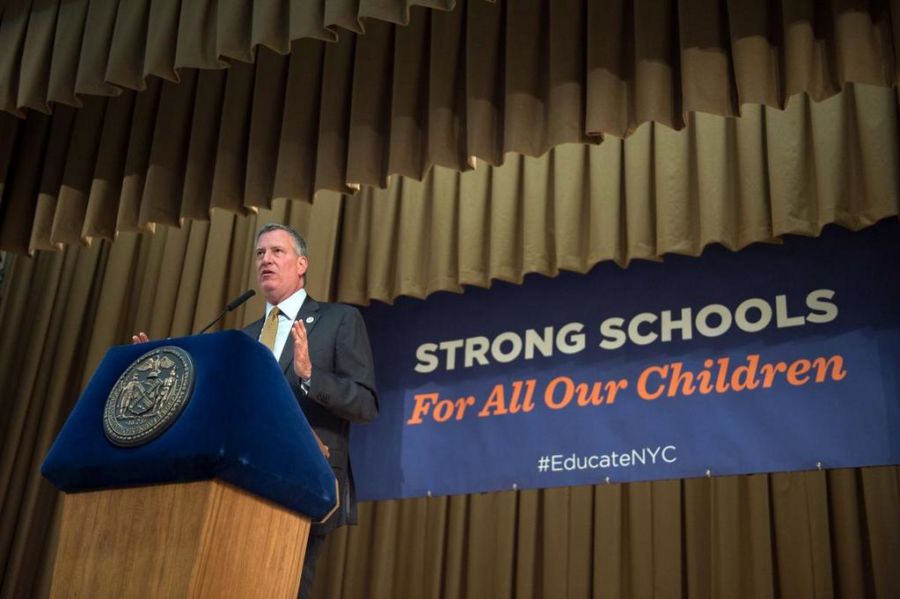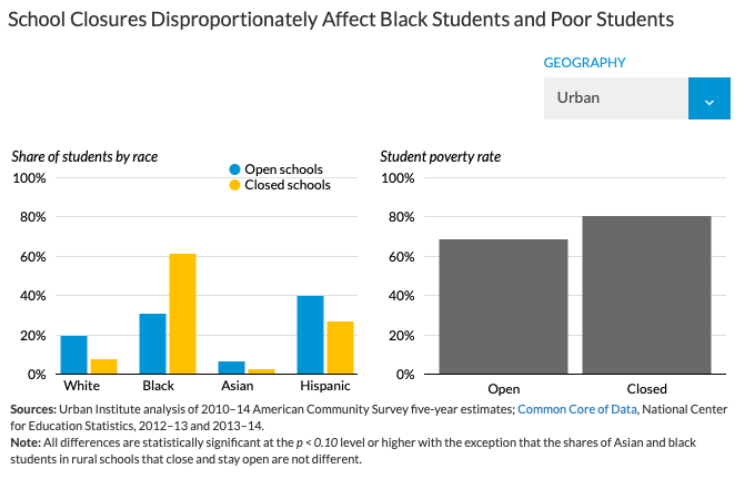
New York City is a place of perpetual change—constantly trying to satisfy the demands of its residents. New Yorkers take pride in the colloquialism “If you can make it here, you can make it anywhere”, and for the children in this city their ability to “make it here” is linked, a great deal, to the quality of their education.
Unfortunately it’s a well-established fact that New York struggles with its public schools with below average graduation rates and above average poverty. Even worse, it is the children for whom a high quality education could make the largest difference who are most deprived of it. This historic problem has been acknowledged by city officials, recently by Bloomberg and de Blasio, however through all the ambitious projects there consistently lacks a focus on what the most deprived children may really need: stability. Gentrification, broken transportation, and school closings disrupt a child’s life; perhaps it is these disruptions that are keeping children from succeeding no matter what new strategy is put in place. It is time to prioritize stability for these children.
Since Bloomberg’s school closing policy in which he closed upwards of 100 schools and displaced students to new or “successful” schools, parents, teachers, and students have become increasingly sensitive to the idea of their school being shut down. However several recent studies have shown that perhaps Bloomberg was onto something. NYU Steinhardt produced a study which followed 23 schools in the School Closures program and found that students who enrolled in the newly developed small schools as freshman were more likely to go to college and remain there than if they were to have attended the school that was shutdown. However the study also uncovered that students who found themselves attending a school that was announced to be closed during the “phase out” process, did not academically fare better at the new school they were sent to compared to the old “failing” school they previously attended. For Bloomberg he boiled the problem down to the larger institution, believing that entire student bodies could benefit from being scattered into “better” schools.
The Bill and Melinda Gates Foundation however articulate the root of a good education as slightly different. Unlike Bloomberg who looked at schools as a whole, the Gates Foundation claims that “what made the most successful schools successful – large or small – was their teachers, their relationships with students, and their high expectations of student achievement.”.
The Gates Foundation’s observation points to an interesting factor in student experience that is seldom discussed. It’s true that student-teacher relations are critical to a quality education, however what is needed in order to build such relationships? Time. And yet, forcing a student to switch schools doesn’t allow for a student to have the time and environmental stability to build a rapport with their teachers nor focus their energy on their studies. Students stuck in limbo after their school is announced as “failing” must use their time and energy to adapt to their new surroundings. Perhaps this is why the Steinhardt study found that students in the “phase out” process did not produce better academic outcomes at their new school.
De Blasio’s approach to school improvement takes this into consideration without explicitly stating so. The Renewal Program, which pumped roughly 773 million dollars into existing schools, allows for improvements to be made to a school without displacing its students. Unfortunately, the Mayor has not seen the results he had hoped for. Seven percent of the schools in the program have closed despite receiving funding, and more are expected to close or drop out of the program. However what is concerning is not that the program hasn’t provided promising results, it is that given these outcomes there is a substantial danger that de Blasio or the next Mayor will implement yet another approach.
In a city with high demands, “Change!” has become the battle cry of school officials—overthrow is desperately grasped at as the solution. If schools are not sufficiently providing for its students, the solution of course is not to sit back and hope for a miracle. However we must remember that for children, often times the most helpful resource we can provide is an environment of stability. It is only natural for children to prioritize their sense of belonging and comfort above their strive towards academic rigour. If the Department of Education wants to produce children who, on an individual level, are succeeding then they must provide environments that are secure and comfortable for their children so that focusing on studying is the only obvious outlet for their energy.
Furthermore with any problem we must first consider exactly who is most vulnerable and in need of help. As depicted in the graph below, the fact of the matter is that school closings and schools part of the Renewal Program serve a disproportionate amount of Black and poor students. These children who live in impoverished communities must often face “ housing insecurity, food insecurity, their parents’ employment insecurity, immigration anxieties, neighborhood violence and safety, and other hassles and dangers that can come with being a low-income person of color in today’s United States.”. The schools that are being changed under every Mayor are not the schools we find in the wealthiest NYC neighbourhoods, rather they are the schools that are situated in the most turbulent parts of the city. For communities in these neighbourhoods, schools are a “potential for stability in an unstable world, the potential for agency in the face of powerlessness, the enactment of one’s own dreams and visions for one’s own children.”.

If the children we are most disadvantaging by creating unstable learning environments are the same students who must deal with change at home, then it is of little surprise that these students are not producing better academic outcomes when they are displaced half way through their education. We must realize that the students who suffer from other NYC governance issues are the same students that must go to a school that cannot provide a stable learning environment. These students are impoverished and often times the Black students of NYC. Using these Black children as guinea pigs under each changing Mayor for a new experiment in improving education for the rest of the city disadvantages them more than their peers. The patterns in who are the most vulnerable and disadvantaged must not be ignored and solutions must take into consideration other factors influencing a child’s ability to learn.
Perhaps what needs to be prioritized in whatever concoction the Department of Education comes up with next, is the idea that a stable environment should be prioritized over the “next big change”. If schools are truly meant to be sites of agency for the most powerless then an end must come to making it more difficult for those already disadvantaged to navigate a system such as public education than their wealthy counterparts. Change does not always have to be so disruptive—perhaps it is time for stability in the city that never sleeps.
By Tina Haertel